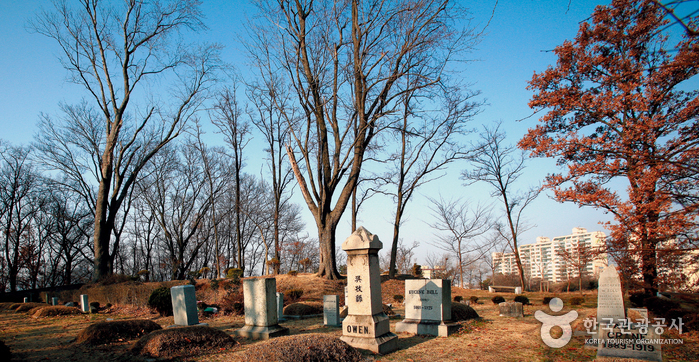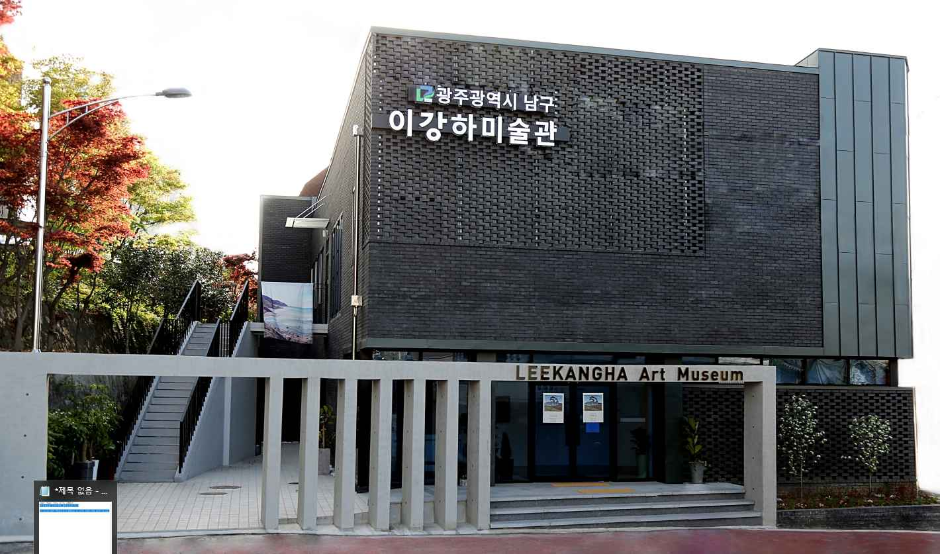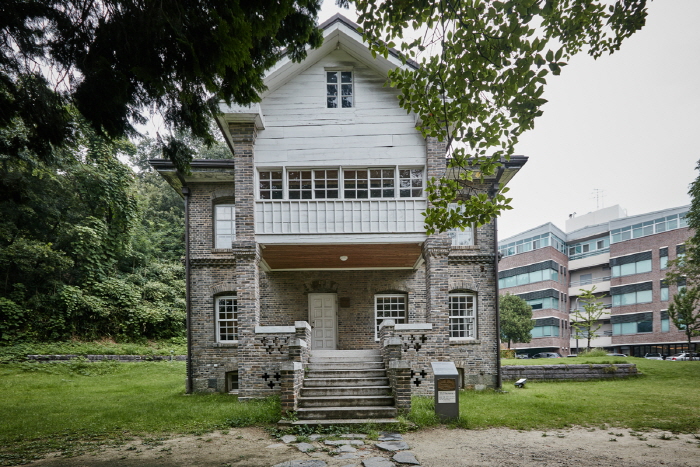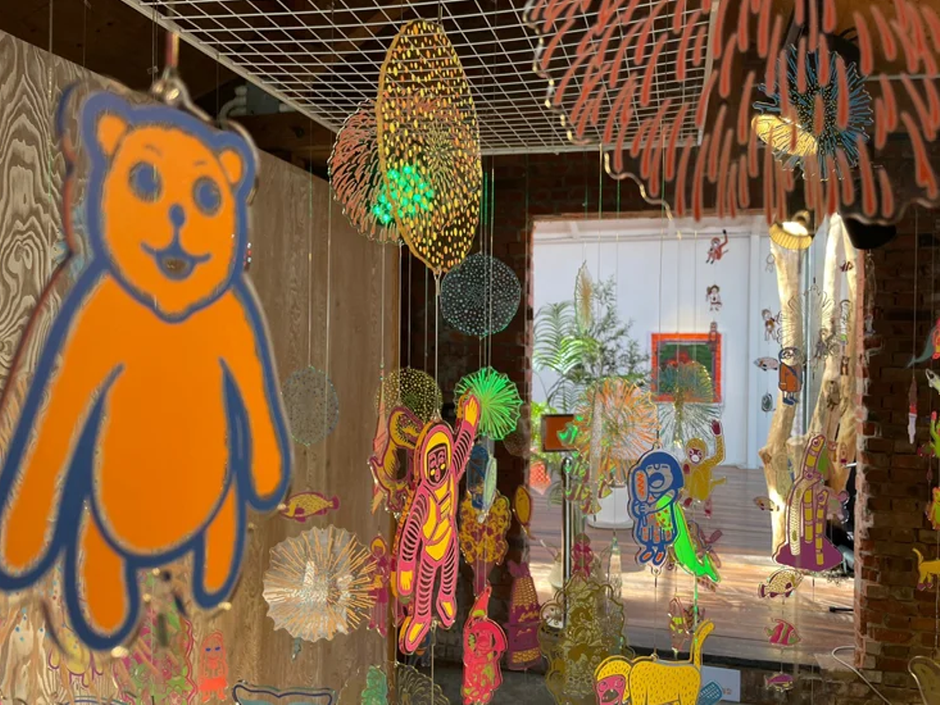10y Ground (10년후그라운드)
14.5Km 2024-11-14
1 Yangchon-gil, Nam-gu, Gwangju
Originally a sports complex, the 10y Ground has transformed into a dynamic cultural hub offering educational opportunities, community programs, and a range of unique initiatives. It also provides space for diverse services, including food, beverages, and lifestyle options. Visitors can enjoy various cultural and art programs and shop for locally produced goods and souvenirs.
Jin Convalescent Hospital (진요양병원)
14.5Km 2025-10-23
33, Daejasil-ro, Buk-gu, Gwangju
Jin Convalescent Hospital is a Ministry of Health and Welfare-certified cancer rehabilitation hospital located in Unam-dong, Buk-gu, Gwangju. We provide personalized care tailored to each patient’s condition and symptoms, focusing on specialized programs for cancer patients while utilizing the latest equipment and technology. Our commitment is to prioritize patients’ health and wellness. In 2024, we were designated a foreigner-friendly hospital in Gwangju, offering internal medicine consultation, a wellness clinic, comprehensive blood tests, obesity treatments, and an integrated pain clinic combining Western and Korean medicine for international patients. Experience compassionate, patient-centered care and expert medical treatment here with us.
Yangnim-dong Missionary Cemetery (양림동 선교사 묘지)
14.5Km 2021-05-28
77, Jejung-ro, Nam-gu, Gwangju
+82-62-607-2333
The Yangnim-dong Missionary Cemetery is the final resting place of 23 missionaries who brought Christianity to Gwangju and led the movement to free the nation from under Japanese colonial rule. Yangnim-dong in Gwangju Metropolitan City was the main area in which Priest Bae Yu-ji and Dr. Clement Owen carried out their work as the first missionaries to Jeollanam-do.
Located nearby is a monument dedicated to Priest Bae Yu-ji and the Owen Memorial Building, built in honor of Dr. Owen and his grandfather. Both memorials are cultural assets and particularly prized by locals of the Christian faith.
LEEKANGHA Art Museum (이강하미술관)
14.6Km 2024-11-14
6 3·1manseundong-gil, Nam-gu, Gwangju
The LEEKANGHA Art Museum, opened in 2018, offers a range of exhibitions, educational programs, and a research center. Visitors can explore the life and art world of Lee Kang-ha in different eras through various exhibitions and gain a deeper understanding of art with performances and educational programs. The museum aims to foster empathy and communication to enrich cultural knowledge by using diverse art-culture experience programs.
Missionary Wilson's House (우일선 선교사 사택)
14.7Km 2025-10-23
20 Jejung-ro 47beon-gil, Nam-gu, Gwangju
+82-62-607-2333
Missionary Wilson’s House is a two-story brick building that sits upon the eastern foothills of Yangnimsan Mountain. Known as the oldest surviving Western-style house in Gwangju, the house is an icon of modern culture and architecture in Korea. The house was built by an American missionary named Wilson in the 1920s (exact date unknown) and was the home of the Wilson family while they stayed in Korea. When the family completed their work in Korea, they sold the house for a very cheap price with the stipulation that the house continued to be used for missionary purposes. The house fell into the possession of the General Assembly of Chonnam Presbyterian Church of Korea in 1986 and now serves as the home office for the Presbyterian Church of Korea.
The square-shaped house consists of a living room, a family room, a kitchen, and a bathroom (1F), several bedrooms (2F), and storage areas and a boiler room (B1). The fact that the entrance of the house faces east is said to be a result of the prevailing architectural culture of Korea at that time. A Netherland-style house built with 55-milimeter thick, gray bricks, the first and second stories are delineated on the exterior with an eye-catching band of bricks.
◎ Travel information to meet Hallyu’s charm - TV series "Hymn of Death"
Here, Woo-jin (played by Lee Jong Suk), Sim-deok (played by Shin Hye-sun), and their troupe rehearsed for their play in "Hymn of Death." The Western-style building, framed by a lush forest backdrop, offers an exotic and picturesque setting.
Art Polygon Horanggassinamu (호랑가시나무 아트폴리곤)
14.7Km 2025-02-04
22 Jejung-ro 47beon-gil, Nam-gu, Gwangju
Located in Yangnim-dong, Art Polygon Horanggasinamu is a multi-purpose cultural space that hosts various programs such as exhibitions, lectures, and performances. In 2021, it was used as one of the venues for the Gwangju Biennale. The space was created by preserving and expanding the original structure of a missionary's garage. Yangnim-dong is home to many modern historical cultural heritage sites and art galleries that connects the past and the present.
Gucci - Shinsegae Gwangju Branch [Tax Refund Shop] (구찌 신세계 광주점)
14.9Km 2024-04-23
1F, 932, Mujin-daero, Seo-gu, Gwangju
-
Balenciaga - Shinsegae Gwangju Branch [Tax Refund Shop] (발렌시아가 신세계 광주점)
14.9Km 2024-04-18
932, Mujin-daero, Seo-gu, Gwangju
-
YSL - Shinsegae Gwangju Branch [Tax Refund Shop] (입생로랑 신세계 광주점)
14.9Km 2024-04-18
2F, 932, Mujin-daero, Seo-gu, Gwangju
-
Beanpole - Shinsegae Gwangju Branch [Tax Refund Shop] (빈폴 신세계 광주점)
14.9Km 2024-06-27
932, Mujin-daero, Seo-gu, Gwangju
-





![Beanpole - Shinsegae Gwangju Branch [Tax Refund Shop] (빈폴 신세계 광주점)](http://tong.visitkorea.or.kr/cms/resource/38/3313838_image2_1.jpg)
 English
English
 한국어
한국어 日本語
日本語 中文(简体)
中文(简体) Deutsch
Deutsch Français
Français Español
Español Русский
Русский